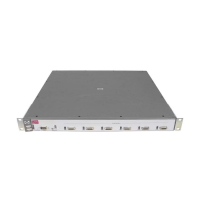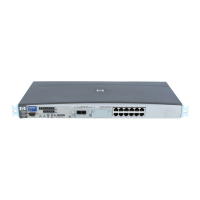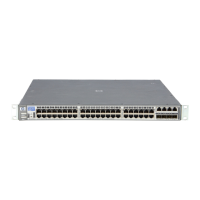3-1
Getting Started With Switch Configuration
Recommended Minimal Configuration
Getting Started With Switch
Configuration
3
Getting Started With Switch Configuration
This chapter is a guide for using the console Switch Setup screen to quickly
assign an IP (Internet Protocol) address and subnet mask to the switch, set a
Manager password, and, optionally, configure other basic features.
For more information on using the switch console and the other switch
management interfaces: the web browser interface and the SNMP
management tool, ProCurve Manager, please see the Management and
Configuration Guide, which is on the ProCurve Web site at
www.procurve.com/manuals.
Recommended Minimal Configuration
In the factory default configuration, the switch has no IP (Internet Protocol)
address and subnet mask, and no passwords. In this state, it can be managed
only through a direct console connection. To manage the switch through in-
band (networked) access, you should configure the switch with an IP address
and subnet mask compatible with your network. Also, you should configure
a Manager password to control access privileges from the console and web
browser interface. Other parameters in the Switch Setup screen can be left at
their default settings or you can configure them with values you enter.
Many other features can be configured through the switch’s console interface,
to optimize the switch’s performance, to enhance your control of the network
traffic, and to improve network security. Once an IP address has been
configured on the switch, these features can be accessed more conveniently
through a remote Telnet session, through the switch’s web browser interface,
and from an SNMP network management station running a network
management program, such as ProCurve Manager. For a listing of switch
features available with and without an IP address, refer to “How IP Addressing
Affects Switch Operation” in the Management and Configuration Guide,
which is on the ProCurve Web site at www.procurve.com/manuals.
For more information on IP addressing, refer to “IP Configuration” in the
Management and Configuration Guide.

